In Memoriam: So Many Lives Lost to Road Violence — And So Many Lessons We Could Be Learning
12:01 AM EST on December 26, 2022

Some of those who were killed by car drivers this year: (clockwise from top left) Alex Fakih, Jack Mikulincer, Eric Salitzky, Ronald Smith and Carling Mott.

So far this year, roughly 140 pedestrians and cyclists have been killed on the streets of New York — virtually all of them by car or truck drivers. More than 100 more people have been killed in cars by other drivers.
Each of these deaths represents the same thing: a crash that was in some way preventable. Yet to paraphrase Tolstoy, death itself is unexceptional, but each individual loss is horrific in its own way. So this year, in a twist on our annual "In Memoriam" story, we'll look at the specific details behind some of the year's most tragic deaths in hopes that the city and its drivers can learn some valuable lessons about keeping the most vulnerable road users safe.
And, perhaps, we won't have to write this story at all next year.
Kwok Kwan, 66
Eleventh Avenue is a horrible place for cyclists. When the wide roadway near the Javits Center isn't encouraging drivers to speed, it's so filled with double- and triple-parked cars, that the road becomes even more dangerous for walkers and cyclists.
Kwok Kwan was riding his e-bike on 11th Avenue on Jan. 16 when he was doored by the passenger of a taxi. He died one month later, the first cyclist fatality of the year. The taxi driver, Dipu Ghosh, 42, remained at the scene and was never charged — even though his passenger opened a door into a cyclist (a violation of state law) and the cab had stopped in a pedestrian crosswalk, six feet from the curb, partially in both the traffic lane and the west side bus lane — a violation of two traffic laws.
Ghosh did have his driver's license suspended for a year, which by the standards of such DMV post-death trials, is fairly noteworthy, albeit a tiny punishment for being involved in a fatal crash. But he was never charged criminally for the offenses, nor are such violations widely enforced. Kwok Kwan's death shows that they should be.
Jack Mikulincer, 99
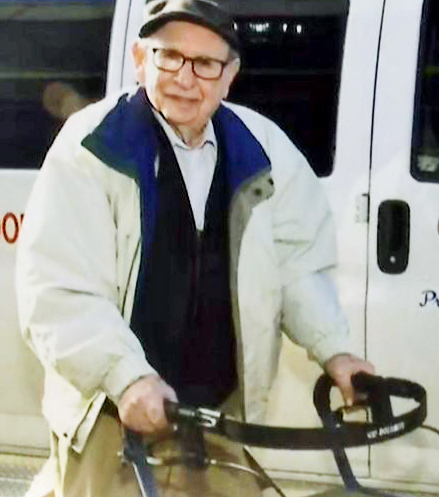
A Holocaust survivor, Jack Mikulincer was killed as he used his motorized scooter to get to temple on Feb. 5 by a driver with a long record of speed-camera and red-light camera violations.
The driver, whom the Daily News identified as local real estate developer Pyotr Yadgarov, had racked up 14 speeding tickets and nine red-light tickets between May 2014 and the day he killed Mukulincer — and got six speeding tickets in 2021 alone.
But he was never arrested for running down the 99-year-old victim on Oriental Boulevard in Manhattan Beach, nor was he prevented from driving. How do we know? He's gotten two more red light tickets since killing Mikulincer, including one just two weeks after the fatal crash.
Could the city have done more to prevent this crash? Of course, but it takes political will: Those six speeding tickets that Yadgarov received make him one of the most reckless drivers in town, but doesn't even come close to the 15 speed-camera tickets a driver must accrue before being forced to take a city safety course — and only a fraction of those who do qualify for the course have taken it, owing to the limited ambition of the Department of Transportation.
The state could help if it allowed the DMV to count camera-issued tickets against a driver's record, but that proposal, by State Sen. Andrew Gounardes, has gone nowhere.
Davina Afokoba,10
It's a seriously messed up situation when anyone is run over on a city sidewalk. But after school on Feb. 9, Davina Afokoba was walking home when the normal chaos of Beach Channel Drive in Far Rockaway was shattered when the driver of a black SUV pulled out of a supermarket parking lot and, instead of making a left turn onto the roadway, kept going straight after another car almost hit hers, killing the child.
Putting aside the horror of knowing that we are not even safe on sidewalks, this death was the first reminder of the year that the city is in the middle of a "ghost car" epidemic, thanks to the easy availability of fake temporary out-of-state license plates In this case, the car had a fake plate, yet the driver was not arrested at the scene, nor in the days since.
The driver — who had a learner’s permit, according to the Daily News — was not accompanied by a licensed driver over the age of 21, as required by state law.
So this was not a surprising accident — this was a completely expected result.
Lin Wen-Chiang, 77
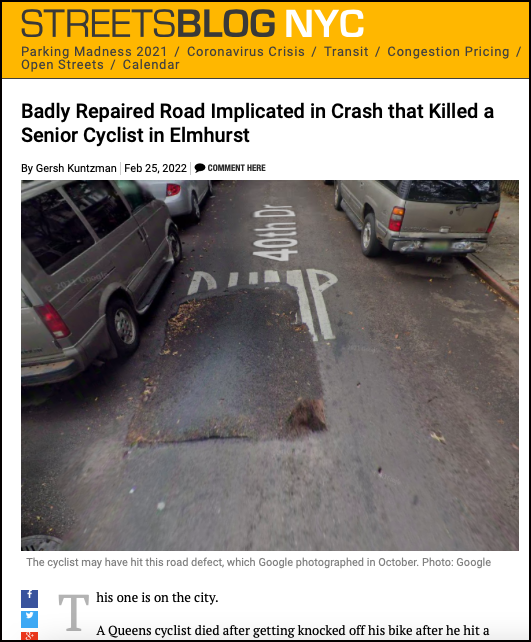
Lin Wen-Chiang should not have even suffered a scratch, let alone lost his life, on Feb. 24 when he was biking on one-block-long 40th Drive in Queens and hit an improperly patched sinkhole on the badly lighted roadway.
City agencies rushed to defend themselves from relentless coverage in Streetsblog that proved the pothole was definitely the fault of the city. Callers to 311 made at least eight complaints about the conditions on the roadway, which stemmed from water pipe work being done — work that was not properly patched up.
Wen-Chiang's death made literally not a single ripple in New York City government or outside of it; no relatives could be found to grieve him publicly, nor did anyone lose his or her job because of a failure that led to a man's death.
Ronald Smith, 53

This much about the death of Ronald Anthony Smith on April 7 is known: Smith was panhandling in the median of Eastern Parkway on the rainy night when an NYPD officer recklessly driving a police van fatally struck and killed him.
The victim's family, citing body camera footage released earlier this month, says the driver of the police van, Officer Orkhan Mamedov, was watching a soccer game when he was speeding in the median of the roadway. And they want Mamedov and his partner, Evan Siegel, fired.
The issue here is not simply that an innocent, much-loved man was killed by cops, but that Smith is not nearly the only one killed by reckless driving by police officers — the kind of death that should be easily preventable. In 2020, a speeding police officer killed Sofia Gomez Aguilon on Pelham Parkway.
And while other agencies have dramatically reduced their crashes and saved taxpayers millions in settlement payments, the NYPD continues to be the albatross around the necks of pedestrians and the budget. As Streetsblog reported earlier this year, the city paid out $138.5 million to settle cases involving a city worker who hit someone — or something — with a city-provided car in the last fiscal year, with settlements by the NYPD amounting to $48.4 million of that total, or roughly 35 percent.
Yuitmay Szeto, 89
To most New Yorkers, the death of Yuitmay Seito on April 23 is the definition of a tragic "accident" — and the NYPD narrative released to the media essentially goes along with that: "A 37-year-old male operating a 2018 gray Dodge Durango was exiting a parking lot onto 48th Street when he struck the pedestrian."
Just an accident, right? Nothing to see here, right?
Not exactly. As reported by Streetsblog, Szeto was killed on a roadway that is designed for danger, thanks to driveways that allow car owners to access several malls, which include a Guitar Center, a Marshalls and a Stop and Shop, while also making it treacherous for anyone on foot. Between January 2019 and Szeto's death, there were 87 reported crashes, injuring eight cyclists, 11 pedestrians and 17 motorists on the single block of 48th Street between Northern Boulevard and the LIRR train yard to the south. But on the comparable block of 48th Street south of the rail yard, there have been 21 crashes, injuring three cyclists, two pedestrians and one motorist.
Nothing has changed on 48th Drive. In fact, it's still bad. Updating the numbers from above, in the seven months since Szeto's death, there have been nine more crashes, injuring another cyclist and four more motorists. On the comparable block south of the mall block, there have been no additional injuries.
Eric Salitzky

What makes so many deaths of cyclists and pedestrians so infuriating is how easy they are to prevent. Eric Salitzky, a promising young architect, was biking near his home on May 5 when he was struck from behind by a still-unidentified driver, who was was heading south on Ninth Avenue.
How was this death preventable? First, the driver should clearly have seen the cyclist in front of him. But if he or she couldn't see, it might very well be because that deadly stretch of roadway is outside an MTA facility where employees routinely and illegally park their cars with work vests on their dash.
That illegal parking on a two-way roadway complicates matters for bus drivers turning from 39th Street onto Ninth Avenue and vice-a-versa. And between 2018 and Salitsky's death, there were 84 reported crashes on just three blocks of Ninth Avenue between 37th and 41st streets, causing 54 injuries, including to nine cyclists and 11 pedestrians, according to Crash Mapper.
“A cyclist has been killed by a private garbage truck driver in front of an MTA facility, where he was riding in a lane where no cars were supposed to be parked, but which was full of (placarded) vehicles,” personal injury attorney Peter Beadle wrote on Twitter at the time. “With cars parked illegally, the street becomes very narrow. A travesty.”
Nothing has changed on the block, by the way. And since Salitsky's death, there have been six more reported crashes injuring two pedestrians.
Carlos Martinez, 53
On May 26, Carlos Martinez was cycling on the highway-like Bruckner Boulevard near E. 136th Street at around 12:55 p.m. when, police said, he “failed to properly navigate the roadway” and fell ... under a tow truck.” This is accurate to some degree, but leaves out crucial information about the circumstances of Martinez's death — and how the city and its affiliated contractors fail us consistently.
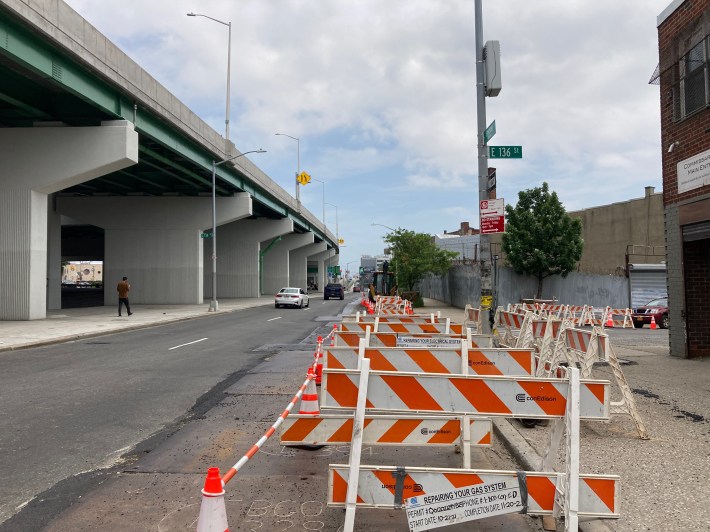
Thanks to video obtained by Streetsblog, the full picture of Martinez's last seconds on Earth came into view: He didn't poorly navigate anything. He was biking in the furthest right lane of the roadway when he encountered a work zone that was barricaded with Con Ed-branded sawhorses. The permit on the barricade said the work would be completed by Nov. 20, 2021 — but the barricades were there six months later, narrowing the roadway and making Martinez's commute a living hell.
And, no, he didn't fall under the tow truck — the video shows he was squeezed by the truck driver, who was moving so fast that he overtook the cyclist right in front of him rather than slowing down on a narrow stretch of road.
So what happened? The driver was never charged. And Con Ed, which initially promised to tell us why it kept the roadway dangerous for so long, stopped responding to our emails.
Another death that caused not a single ripple inside city government.
Unidentified victim
Police have never identified the pedestrian who was killed on June 2 at a dangerous intersection in Woodside, Queens, nor has the reckless driver who killed him been charged.
But it should never have come to this. The spot where the walker was struck — Broadway at 69th Street — is notorious because it features exit and entrance ramps to Brooklyn-Queens Expressway that intersect with residential streets and wild and untamed Broadway. Between Jan. 1, 2018 and Dec. 31, 2021, there were 93 reported crashes at that one intersection, or 23 per year, injuring one cyclist, five pedestrians and 25 motorists, according to city stats. Since then, 15 more crashes have been reported, injuring another cyclist.
No substantial changes have been made to the intersection. And people's lives are endangered there every day.
Vorda Begum, 25
Victim-blaming by the NYPD has been so infuriating for so long that the City Council required the DOT to take over the role of informing the media and the public about fatal crashes — a practice that started this year. That change has had some positive results (though the media gets less information than it previously got, if you must know), but sometimes, the blaming continues.
That was certainly the case in the death of Vorda Begum, who was killed on June 20 on Flatlands Avenue. According to the initial report issued by the DOT, Begum was crossing the wide roadway “mid-block” east of Ralph Avenue when she was struck by the 25-year-old driver of a Ford Focus that was heading eastbound on Flatlands.
"Mid-block"? The stretch of Flatlands Avenue where Begum was killed is roughly three football fields in length between traffic lights, even though it has a park, a school, a bus stop and is near a shopping district — and is well known to the Department of Transportation as a danger zone. In just the first six months of 2022, there were 11 reported crashes on that single block between Ralph Avenue and E. 76th Street, injuring a pedestrian and four motorists, according to city stats.
Since then, it's only gotten worse: There have been 17 reported crashes on that stretch, injuring one cyclist, three pedestrians and 14 motorists, city stats show.
During the eight years of the de Blasio administration, there were 445 reported crashes on that single block — or an average of 55 per year — injuring two cyclists, 35 pedestrians and 115 motorists, killing one car driver.
Yet no safety improvements were made, not even at the entrance of the South Shore High School.
Meanwhile, the 25-year-old driver who killed Vorda Begum was not charged and his or her name was never released.
Alex Fakih, 49

Alex Fakih was killed by a reckless unlicensed driver on July 7 on a Staten Island roadway that the city knew to be dangerous.
According to police, said unlicensed driver, Waldemar Gonzalez, 65, was driving his massive F-150 pickup truck northbound on Van Duzer Street at around 9:30 p.m. when he struck Fakih, who was attempting to cross Van Duzer Street at St. Julian Place.
The intersection was something of a Wild West of transportation design at the time of Fakih's death; at St. Julian Place, northbound Van Duzer splits into two roadways — Van Duzer Street and Van Duzer Street Extension, forcing pedestrians to cross a wide stretch to get to safety (cops say Fakih was, indeed, crossing Van Duzer from west to east, when he was struck on Van Duzer Street Extension). Archival photos provided by Google show that over time, the DOT has actually provided less cross-hatched paint to indicate to drivers where they are supposed to go.
Gonzalez ended up pleading guilty to leaving the scene and was indeed sentenced to one-to-three years in prison. But the sentence is an extremely rare one — and one likely imposed because his license had previously been suspended 11 times.
Eleven license suspensions, yet the driver was able to continue driving. There's a lesson there.
Wenntwen Porgho, 43
Bad road design and careless driving were the ingredients for the disaster that led to the death of Wenntwen Porgho in The Bronx on July 20.
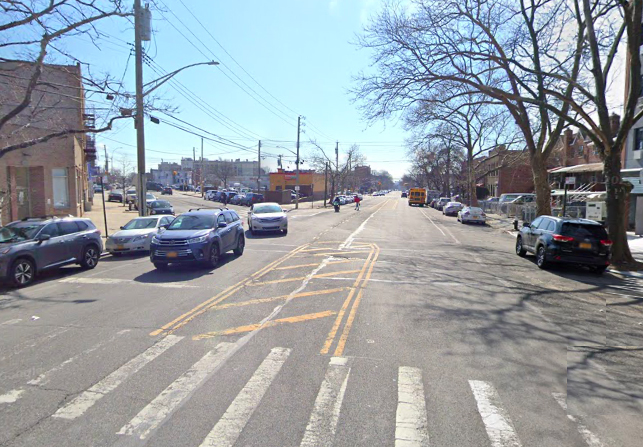
According to police, Porgho was riding his bicycle north on Bronxwood Avenue at around 10 p.m. when he was struck by the 30-year-old driver of a Subaru sedan who heading southbound on Bronxwood and was making a left turn onto Williamsbridge Road.
Here's the problem: The roadways are not perpendicular and the dogleg intersection has no signal. Drivers often exceed the recommended turning speed of 5 miles per hour as they make the wide left turn onto Williamsbridge (see photo above). There were 18 reported crashes at or adjacent to that single intersection between January 2018 and Porgho's death, or basically four per year.
The driver was never charged. The intersection was not redesigned.
Carling Mott, 28
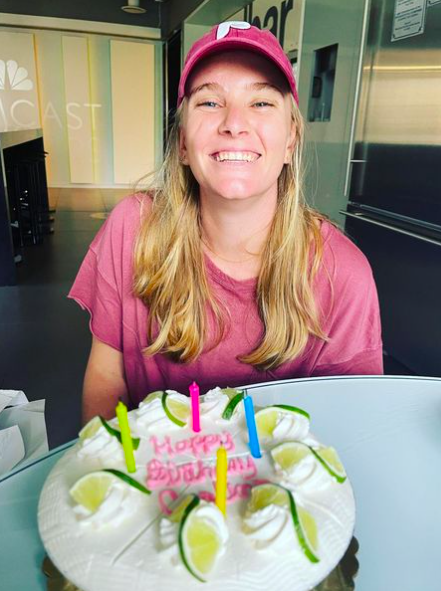
The death of cyclist Carling Mott on the Upper East Side is a reminder that it's easy to say, "Safety first!" even when safety comes third or fourth to some people.
Mott was killed on July 26 when a truck driver squeezed her between his vehicle and a line of parked cars on E. 85th Street.
That roadway would have had a painted bike lane on it — except that several local officials on the East Side, including soon-to-be-retired Rep. Carolyn Maloney, put safety well down the list. As Streetsblog reported, Maloney was caught on tape urging the Upper East Side's community board to reject the bike lane
Maloney left a voicemail for Scott Falk, then the co-chair of Community Board 8’s Transportation committee, to oppose crosstown bike lanes on E. 84th and E. 85th streets claiming the lanes would be "a security breach.”
Maloney specifically cited St. Ignatius Loyola Parochial, St. Regis, and the Ramaz School which are on the blocks west of Park Avenue. “[It’s] a security challenge. There’s just a lot of community activities taking place and many believe it is a security challenge for the young people on that street,” she said.
Then-Gov. Andrew Cuomo's sister, Matilda, was also part of the opposition. (Maloney lost her re-election bid.)
Worse than politicians or a powerful leader's sister throwing their weight around, Mott's death forced her grieving mother into a position of having to advocate through her pain. In an op-ed for Streetsblog, Janice Mott not only called for "safe corridors east/west so that we can prevent another tragedy from happening" as well was barriers "to prevent trucks from entering roadways that are designated inaccessible for large trucks."
No mother should be put in that position.
Joel Adames and David Fernandez
Bad things happen in the dark. Joel Adames and David Fernandez were just standing and talking on the corner of Sherman Avenue near W. 207th Street at around 4 a.m. on Aug. 3 when a reckless driver with a fake plate ran a red light and smashed into another car, sending one of the vehicles flying through the intersection — directly into the two men.
The neighborhood does not have a school zone speed camera and there’s only one red-light camera in Manhattan north of 96th Street.
A few days after the crash, Streetsblog obtained the horrific video of the last moments in the life of Fernandez and Adames, which, sadly, reminds us that we are never really safe.
The crash came after Mayor Adams had previously announced a crackdown on “ghost cars" such as the one that killed the two men. He and NYPD Transportation Bureau Chief Kim Royster encouraged members of the public to call 311 when they see a car with a fraudulent tag. But according to a database of 311 complaints filed since that exhortation, only 591 cars out of 5,787 reported to 311 as having a fake plate have been summonsed.
Sherman Avenue remains a very bad roadway. Since January 2014, there have been 604 reported crashes on the very short stretch of Sherman Avenue between Dyckman Street and 10th Avenue, injuring 16 cyclists, 74 pedestrians and 129 motorists, city stats show.
Jarrod Little, 43
There's that old saying that if you forget history, you're condemned to repeat it. That was certainly true regarding the dangerous intersection of Linden Boulevard and Pennsylvania Avenue where cyclist Jarrod Little was killed by a truck driver on Sept. 1.
According to police, both the truck driver and Liddle were heading south on Pennsylvania Avenue, when the truck driver struck him as he made a right turn onto Linden Boulevard. The driver remained at the scene and was not arrested.
Could this crash have been prevented? Well, it's not as though the city didn't know that both roadways are exceptionally dangerous, given that a woman was killed at the same intersection in a hit-and-run just a few months earlier. Plus, both roads are just designed for danger.
“This is the result of inequitable street design,” Transportation Alternatives said in a statement at the time. “[T]he city has not made the 11-lane, 150-foot-wide Linden Boulevard or the seven-lane, 78-foot-wide Pennsylvania Avenue safe. Despite the known dangers, there are no turn-calming measures installed, no leading pedestrian intervals, and no bike lanes at the intersection.”
A member of the community board, Wilfredo Florentino, demanded that the city to take a second look at every major artery in the neighborhood.
“Pennsylvania Avenue and Linden Boulevard are among the most dangerous corridors within not just Community Board 5 but the whole city,” he said.
Will there be another Jarrod Little? Well, the DOT last worked on the corridor in 2018, and promised more work in 2019 — but there's been nothing since. And in the three years before Little was killed, the stretch of Linden between Kings Highway and 78th Street was averaging 1.5 crashes per day. And that rate hasn't really changed: Since July 1, there have been 177 reported crashes on that short stretch, injuring nine cyclists, 16 pedestrians and 85 motorists.
And consider this: The single intersection where Jarrod Little and the unidentified victim in the earlier crash were killed has experienced 48 reported crashes, killing two people and injuring two cyclists, eight pedestrians and 22 motorists, according to city stats.
May 2023 be safer.
Jonathan Martinez, 5
If anything can be said for the death of 5-year-old Jonathan Martines is that his death at least sparked some outrage.
Martinez was killed on a badly designed Queens street on Sept. 1 by the hit-and-run driver of a RAM pickup truck with fake out-of-state plates. A few weeks later, cops arrested Xavier Carchipul and threw the book at him, alleging that he was operating the truck without a license, inspection, insurance or registration — a true ghost car if you ever saw one.
And the Department of Transportation hurried to fix the weirdly designed triangle where Martinez was killed, but only ended up adding an all-way stop, according to city records.
Martinez was killed less than a block from P.S. 127. As Streetsblog reported earlier this year, streets around schools have higher levels of traffic violence, which disproportionately impacts students of color. Very little was done in 2022 to change that — though the Streetsblog reporter who conducted the investigation was kicked out of a Department of Education press conference for asking about it.
Kala Santiago, 25
Here's a victim who was blamed by the city rather than the truck driver who wasn't even on a truck route before he ran over a cyclist who had been pedaling right in front of him.
Kala Santiago was outside the protected bike lane on Parkside Avenue on Oct. 12 because she was apparently preparing to turn off the roadway onto a side street. A police spokeswoman said “the bicyclist collided” with the truck near Parade Place, but the truck driver, Saeed Ahmed, painted a different picture. He claimed that he saw Santiago in front of him as both moved eastbound on Parkside Avenue, but she fell into his truck as he moved to pass.
“As soon as she got right by my wheels of my trailer, she got nervous … and she went under,” Ahmed told Streetsblog. He was never charged for the crash, nor even issued a summons for driving on a route not designated for trucks like his.
Families for Safe Streets is a non-profit dedicated to both easing the pain experienced by victims' relatives and also fighting to make roadways safer. To make a donation, click here.
This piece was the work of the Streetsblog staff.
Stay in touch
Sign up for our free newsletter
More from Streetsblog New York City
Thursday’s Headlines: Speed-Limiting Tech Edition
State Sen. Andrew Gounardes continues his push to force reckless drivers to install speed limiters in their cars. Plus more news.
DOT Official: All Our Free Parking Justifies Keeping Curb Space for EVs
If only someone could do something about the parking!
New York City to Install 500 Secure Bike Parking Hubs In The Next Five Years: Sources
Your bike may finally get a roof over its head.
Adams Backs Lower Speed Limits, Calls Crashes ‘Accidents’
The mayor wants New York City drivers to "slow down," but it's not clear yet how many streets will get lower speed limits.
Wednesday’s Headlines: Trump Posts About Congestion Pricing Edition
Donald Trump comments on congestion pricing — no surprise, he's against it. Plus more news.




